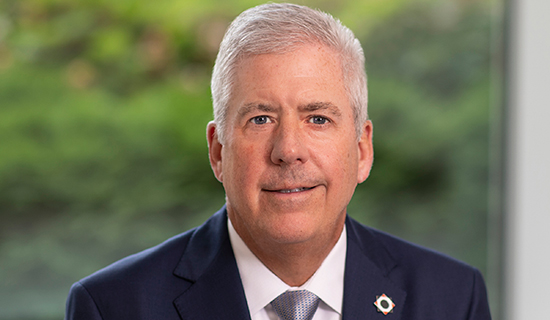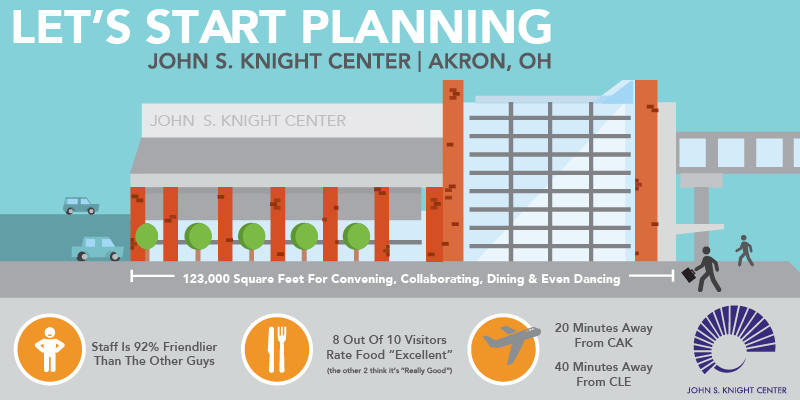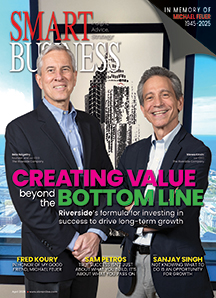When a small group of Ohio farmers got together in 1848 and formed a mutual insurance company to protect their properties, they set out with a strong purpose to take care of one another. Since then, the firm now known as Westfield has become one of the leading property and casualty insurance companies in the country as it keeps evolving to meet customers’ needs. Now, 175 years later, this foundational mission lives on as Westfield continues to grow.
“We exist solely for our customers. We were formed in 1848 for that reason, and that’s why we exist today,” says President, CEO and Board Chair Ed Largent. “We enable families and business owners to pursue their dreams and manage risk in their lives, and we’re there for them when crisis strikes. When our customers thrive, that’s when our legacy comes alive. Their success is our legacy.”
Founded on core principles of integrity, trust, knowledge, respect and stewardship, Westfield’s guiding vision and values have remained constant while the world has changed drastically through the decades. By staying focused on its mission “to enable customers’ peace of mind and financial stability,” Westfield has navigated recessions, depressions, record-breaking weather catastrophes and global pandemics with a steady dedication to taking care of its customers, employees, partners and communities through all the ups and downs.
ADVERTISEMENT
Specialty expansion
For most of its history, Westfield focused on standard lines of property and casualty insurance —including personal automobile and homeowners insurance in 10 states (which made up 36 percent of the business last year), and commercial insurance in 21 states (accounting for 38 percent of the business). Going back to the firm’s farming roots, agribusiness still makes up another 10 percent of premiums written. Additionally, Westfield operates a surety business that provides bonds in all 50 states. Beyond insurance, the company also operates Westfield Bank, a regional bank in Northeast Ohio that provides services to independent insurance agencies across the country.
But Westfield was never involved in the specialty insurance space, which refers to specialized insurance products that address unique risks, often seen in industries like energy and aviation, that aren’t covered by standard policies. Seeing opportunity in that space, Largent decided to take the leap a few years ago.
“There was some dislocation happening within the specialty market,” he says. “A lot of longtime players were retrenching, the talent was moving around and new capital was coming in. That started some opportunistic conversations that ultimately led to a strategy of hiring leadership talent to build a specialty capability.”
With the strategic hire of industry veteran Jack Kuhn in July 2021, the firm launched Westfield Specialty and entered this market for the first time. Rapidly growing to comprise 12 percent of premiums written last year, the specialty business is quickly ramping up in the marketplace.
“It’ll take years before the full benefits play out,” Largent says, “but ultimately this diversifies our portfolio of businesses, which will enable us to serve more customers.”
International growth
Since Kuhn brought experience scaling global multi-billion-dollar insurance portfolios, Largent knew that Westfield would eventually investigate international growth opportunities in the specialty space. “But we probably didn’t expect to make a move as quickly as we did,” he says.
In February 2023, as the firm began celebrating its 175th anniversary, Westfield announced its acquisition of Lloyd’s of London Syndicate 1200 — launching Westfield into the international market and accelerating the growth of Westfield Specialty by tipping its portfolio past $1 billion in premium.
“Otherwise, it would take us years to build something from scratch,” Largent says, “so acquiring an established entity really jumpstarted the international arm of our business.”
Largent says that Syndicate 1200 people were a key factor in the acquisition, so he kept most of them in place and hired an international CEO, based in London, to lead the team. Throughout the rest of the year, Westfield will “attach” the acquired company to its internal systems while integrating people into the culture. Ultimately, Largent’s goal is to stay focused on providing the level of service that Westfield is known for, while scaling it internationally.
“In a period of high growth, it’s easy to get distracted and wrapped up in all the activity,” he says. “As leaders, we have to stay focused on the fundamentals. So far, 24 months into the specialty business, it’s going better than I could have expected, but I’m not declaring victory yet. We’ve got a ways to go, so we have to stay focused on the fundamentals.”
Instilling the culture
To keep up with this growth, Westfield hires hundreds of people each year to support its standard lines, plus hundreds more in the specialty business over the past couple of years. When new hires join the team of 2,500 — whether they’re recent college graduates, experienced talent or acquired employees — there’s one recurring message they’ll start hearing often: the importance of Westfield’s culture.
“In this huge period of growth as we have lots of new people coming in, we want to ensure that we talk about the culture and help people understand why the culture’s important and how it’s connected to our mission,” Largent says.
To help underscore the impact of the culture throughout the organization, employees can nominate colleagues who embody stewardship, respect and other core traits. This enterprise-wide recognition program, called Spotlight, is “specifically designed to focus on and recognize the competencies and skills that we think are really important,” Largent says.
The firm also invests in honing those skills through various training programs offered through Corporate Learning and Development. Courses range from basic skills to professional and leadership development. Westfield also partners with industry organizations to provide insurance-specific technical training for underwriters and actuaries, including accreditation testing.
Corporate L&D recently incorporated the LinkedIn Learning online platform, which offers more than 16,000 video courses taught by industry experts covering a range of business and technical skills. And, if employees are still seeking additional education outside of those opportunities, Westfield also offers tuition reimbursement.
Labor is an ongoing challenge in the insurance industry, with hundreds of thousands of employees expected to retire within the next few years. By building up talent pipelines to avert this challenge, Largent and his team are positioning Westfield for future growth.
“There are lots of folks retiring, so we’re making sure that early- and mid-career people are getting the right experiences,” he says, “and investing in them so they can have the expertise they need to carry on the organization for the next generation.”
Giving back
Once people experience the culture at Westfield, they typically describe it as “caring and empathetic,” Largent says. Throughout the generations, he can cite countless examples of the firm taking care of customers, employees, distribution partners and the surrounding communities where they all live and work. Westfield was originally established to help neighbors during times of need, and today that purpose flows beyond insurance services to drive the firm’s commitment to community service.
“It goes back to our mission,” Largent says. “We’re here to provide that promise of protection and be there for people when bad things happen. That’s foundationally who we are, and we always want that commitment to caring to show through as part of who we are.”
To focus its philanthropic efforts where they can make the biggest impact, Westfield identified key areas for giving, including family stability, disaster recovery, safety and economic development. The firm even endowed a private foundation in 2005, called Westfield Insurance Foundation, to support causes that align with those objectives. Each year, agents help nominate nonprofits from their hometowns focused on these three areas, helping the foundation donate more than $600,000 to neighborhoods across the country.
The foundation also awards grants to nonprofits where Westfield employees volunteer some of their personal time each year. Additionally, Westfield matches employee contributions to the American Cancer Society, American Heart Association, United Way and other nonprofits.
Pandemic pivots
One of Largent’s favorite stories to tell about Westfield’s rich history comes from the late 1890s — an era devastated by war, financial crisis, catastrophic weather and pandemics.
“All the banks closed, people were panicking and there was some concern about whether we would make it,” he says. “So, our president spent his time driving around the countryside in a horse and buggy, paying claims and looking people in the eye to calm their fears and make sure they knew we were there.”
That undying commitment to the firm’s mission has been key to surviving hard times, so when the most recent pandemic hit, Largent doubled down on this commitment.
“We had a pretty intense focus on people during the pandemic,” he says. “We’ve always had that focus, but it had to be turbocharged during the pandemic. We had to come up with new ways to engage with people.”
When COVID struck, Westfield was completing a major home office renovation — what Largent calls a “massive investment in an award-winning workplace designed to promote collaboration,” with spacious collaborative zones instead of private offices or cubicles. But those plans for in-person collaboration had to pivot quickly as people suddenly started working from home.
About 25 percent of Westfield’s workforce already worked remotely at that point, so the firm had the technology infrastructure in place to support the transition. Now, the firm takes a flexible approach to hybrid work, with most employees coming to the office two or three days a week, and working remotely the rest of the time.
“Taking risks, leveraging technology and embracing flexibility — it’s another example of our willingness to change,” Largent says. “We’re still figuring out how to have a culture that embodies empathy and caring when there’s all this hybrid interaction. It’s going to evolve as we continue figuring out how best to leverage technology and in-person collaboration.”
Innovate and adapt
By holding onto the mission of care that has become its legacy, Westfield has continued to grow — ending 2022 with nearly $2.4 billion in direct written premium and “headed to $3 (billion) pretty quickly in another year or so,” Largent says. With more than $8.7 billion in assets and a financial strength rating of “A” or better from AM Best since 1934, Westfield is well-positioned to capitalize on more growth opportunities.
“We’re in a period of growth where the majority of our businesses are growing significantly, which is really exciting. We’re growing throughout the U.S. and now internationally,” Largent says. “A big part of what’s next for an organization like us is figuring out how to evolve the products we offer, because the world is changing constantly, so we have to evolve what we offer customers to help them manage risk in the 21st century. That requires big investments in people, technology, data and analytics.”
For example, new cyber risks require new solutions in cyberinsurance. But technology is also impacting standard lines of insurance, especially as a tool to help prevent risk. Largent has a sensor in his home that monitors his electrical system to alert him of any issues before a fire — helping to prevent a potentially costly insurance claim. Similarly, he says, cars equipped with smart tech can help drivers stay safe while helping insurance companies understand their customers’ driving behavior. Westfield recently rolled out a new safe driving usage-based insurance program, called MissionSafe®, that uses onboard tech to enable safer driving habits and policy premium discounts.
“It basically captures data about a person’s driving, and we factor that into the product and how we price it,” he explains.
That’s just one small example of how Westfield continues to innovate and adapt to keep customers protected from evolving risks. By staying “relentlessly focused” on the founding mission to take care of one another, Largent leads Westfield through 175 years of evolution toward the next century of growth.
“When people hear 175 years, a lot of people equate that longevity to being rigid and conservative, but the only reason we’re still around is because we took risks, dealt with challenges and changed,” he says. “We made it by embracing change and having the courage to evolve.” ●
TAKEAWAYS
- Take risks to grow, but stay focused on your mission.
- Invest in your people through training and development.
- Give back to the communities where you live and work.
- Embrace change and evolve to stay relevant.




